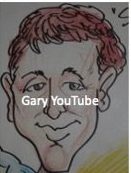by Gary Mintchell | Apr 24, 2024 | Business, Security
More and more companies are developing partnerships to serve customers rather than trying to reinvent the wheel. Hexagon had acquired PAS and its Cyber Integrity solution some years ago. This partnership announced with cybersecurity solution provider Dragos aims to do no less than “revolutionize OT cybersecurity at industrial facilities.”
The technical partnership focuses on integrating the complementary OT cybersecurity capabilities of the Dragos Platform and Hexagon’s PAS Cyber Integrity to provide customers with enhanced inventory data, comprehensive configuration management and superior intrusion detection and threat management to protect businesses operating in multiple critical infrastructure sectors. The collaboration is expected to harness the respective strengths, industry insights and innovative spirit of both Dragos and Hexagon.
“This relationship represents a significant step in forging the future of OT cybersecurity,” said Nick Cappi, vice president of OT Cybersecurity at Hexagon. “Through the integration of technologies, industrial facilities that use Hexagon and Dragos will be in a better position to achieve their security goals. We are excited to work together and collectively solve bigger security challenges for customers.”
The companies will integrate their specialized expertise and capabilities to tackle the unique challenges encountered by owner operators. Together, they aspire to enhance safety, efficiency and productivity, with a goal of revolutionizing how the cybersecurity industry protects industrial infrastructure and valuable assets.
“Hexagon is known for providing forward leaning technology that also prioritizes safety and security, and the partnership with Dragos brings additional value to industrial and critical infrastructure organizations using our technologies,” said Matt Cowell, Global VP of Business Development at Dragos. “The integration between Dragos and Hexagon will leverage our complementary capabilities and respective strengths to provide an integrated approach to managing security across the different layers of the operational environment.”
by Gary Mintchell | Apr 15, 2024 | Automation, Security
Honeywell has been known for cybersecurity solutions for a long time. With its Honeywell Connected Enterprise platform, it is supporting the corporations realigned portfolio around powerful megatrends, including automation and energy transition. I had a cybersecurity problem and solved it with this solution said no one anywhere. However, here is a story about a company who has implemented Honeywell’s cybersecurity solutions.
Honeywell announced that Petróleos del Perú S.A. (Petroperú), one of the largest hydrocarbon producers, refiners and distributors in Peru, will implement Honeywell cybersecurity solutions in order to help Petroperú strengthen the cyber resiliency of its refinery operations and accelerate its broader digital transformation.
Petroperú’s multi-year investment with Honeywell includes access to Honeywell’s cybersecurity consulting support, managed security services and world-class threat detection capabilities. Honeywell will help Petroperú further scale its operational technology (OT) cybersecurity efforts in order to improve visibility into potential cybersecurity vulnerabilities and threats across its systems.
“Cybersecurity resiliency is a crucial capability that underpins our sustainable operations as we work toward the future in the energy transition,” said Fernando Villacorta Padilla, chief controls and advanced applications engineer, Petroperú. “Honeywell’s cybersecurity services complement the innovative software solutions that it previously developed to support our digitalization initiatives and our refinery modernization project.”
Petroperú’s implementation of Honeywell’s cybersecurity solutions builds upon its prior integration of Honeywell Forge Workforce Competency solutions, which the company currently uses to train its industrial workforce regarding safer and more efficient operations. The added integration of Honeywell cybersecurity solutions will help Petroperú to further improve its operational efficiency, safety and security programs across Petroperú’s plants and refineries.
“Without strong cybersecurity capabilities, energy companies that heavily rely on technology and information systems to operate can face serious consequences, including financial losses, operational disruptions, reputational damage and environmental risks,” said Sunil Pandita, vice president and general manager of Honeywell Cyber & Connected Industrials. “While Petroperú is already at forefront of the digital transformation within the energy sector, Honeywell’s cybersecurity solutions will help Petroperú to identify and minimize potential cyber risks in near real time in order to create safer, more efficient operations that benefit both customers and employees.”
Honeywell has been working with Petroperú for almost 50 years. Additionally, Honeywell provides engineering, licenses, services and technical support for three units currently in operation.
by Gary Mintchell | Apr 4, 2024 | Security
Technology trends form a large part of reporting here. Another trend is companies sending out questionnaires and publishing reports. This one from Xage Security asked about manufacturers’ opinions regarding zero trust adoption.
Highlights:
- Manufacturers are worried about data sharing – 90% of respondents in the manufacturing industry are concerned with sharing data outside the organization, either via cloud services or with third parties.
- Industries are embracing transformation at varying speeds – Manufacturing leads the charge, with 90% agreeing that integrating IT / OT and digital transformation is a pathway to progress. However, oil & gas is lagging at 35% in agreement.
- Most organizations have adopted zero trust principles – 72% have started adopting zero trust principles, with 31% currently in the process of crafting a strategy for zero trust deployment.
“While zero trust is not a one-size-fits-all model, the data shows that organizations are evolving their understanding of zero trust as a strategy to enhance the safety, security, and reliability of both their enterprise IT and OT environments,” said Jonathon Gordon, Industry Analyst at Takepoint Research. “The industrial world is taking action and recognizes the necessity to expedite zero trust adoption to keep our nation’s—and world’s—critical infrastructure safe from cyberattacks.”
Xage partnered with Takepoint Research to survey 250+ cybersecurity senior leaders across critical infrastructure organizations, energy, utilities, transportation, oil and gas and manufacturing. Data was collected from December, 2023 through February, 2024.
“Amidst market confusion surrounding various zero trust strategies, it is evident that organizations are now diligently navigating through them and honing their approaches,” said Sri Sundaralingam, SVP of Marketing at Xage. “The survey results underscore the increasing adoption of zero trust across industrial sectors, aimed at mitigating crucial business risks while propelling digital transformation alongside new business initiatives.”
Get the full Zero Trust Report here.
by Gary Mintchell | Mar 1, 2024 | Business, News, Security
New OT threat groups include VOLTZITE linked to Volt Typhoon; ransomware attacks grew 50 percent; state actors and unsophisticated hacktivist groups gained ground against OT systems.
Cybersecurity companies busily conduct surveys and issue reports. This news concerns Dragos’ release of its sixth annual OT Cybersecurity Year in Review report.
The report named the emergence of three new threat groups, including VOLTZITE linked to Volt Typhoon, and found that ransomware continued to be the most reported cyber threat among industrial organizations with a nearly 50% increase in reported incidents. 2023 also saw the first time a hacktivist group achieved Stage 2 of the ICS Cyber Kill Chain.
Based on data gathered from annual customer service engagements conducted by Dragos’s cybersecurity experts in the field across the range of industrial sectors, the top challenges industrial organizations need to address are:
- Lack of Sufficient Security Controls: 28% of service engagements involved issues with improper network segmentation or improperly configured firewalls.
- Improper Network Segmentation: Approximately 70% of OT-related incidents originated from within the IT environment.
- Lack of Separate IT & OT User Management: 17% of organizations had a shared domain architecture between their IT and OT systems, the most common method of lateral movement and privilege escalation.
- External Connections to the ICS Environment: Dragos observed four threat groups exploiting public-facing devices and external services and issued findings related to externally facing networks such as the internet in 20% of engagement reports.
by Gary Mintchell | Feb 29, 2024 | News, Security
Tenable One has some news today about the release of Tenable One. It is a visibility product that allows managers and others to see assets across an enterprise regardless of IT, OT, or IoT. You will notice a new marketing term in the release—at least new to me. The company is now called an “Exposure Management” company. They tell me that means it enables organizations to understand cyber risk in order to make more effective business decisions.
Tenable, the Exposure Management company, announced February 29, 2024 the release of Tenable One for OT/IoT. It is the first and only exposure management platform that provides holistic visibility into assets across IT and operational technology (OT) environments.
I cannot verify the “first and only” claim, but companies are often careful to define things such that they can make the claim. In this case, exposure management most likely is the key phrase (before anyone writes to me). Also they talk management. What they do is provide information for managers to be able to take informed actions.
Tenable One for OT/IoT extends visibility beyond IT, to include OT and IoT, and helps security leaders gain a clear picture of true exposure across their entire attack surface. This first-of-its-kind approach allows organizations to prioritize security risks wherever they reside – be it in the cloud, data center, or the OT environment – and most importantly, to understand how these risks create attack paths across their infrastructure.
Users can also view their global exposure, including OT assets, to see how their security posture compares to other companies in their industry and gain additional insights from their OT assets to make better decisions, faster.
Three key points:
- Comprehensive visibility beyond the IT environment to the modern attack surface
- Risk intelligence to mitigate operational risks
- Actionable planning and decision making across enterprise and critical infrastructure environments
by Gary Mintchell | Feb 26, 2024 | News, Security
This news reports yet another survey of managing security risk.
Cyolo, the access company for the digital enterprise, in partnership with Ponemon Institute, released a global study exploring how organizations that operate critical infrastructure, industrial control systems (ICS), and other operational technology (OT) systems are managing access and risk in an era of rising connectivity.
“Our world has become increasingly interconnected, and the findings of this report highlight the vital need for organizations to reevaluate and enhance their strategies for ensuring secure access into OT environments,” said Larry Ponemon, Chairman and Founder of the Ponemon Institute.
The report, “Managing Access & Risk in the Increasingly Connected Operational Technology (OT) Environment,” reveals that many industrial organizations lack the resources, expertise, and collaborative processes to effectively mitigate threats and ensure secure access to OT systems. The report is based on a survey of 1,056 security professionals across the United States and EMEA who work in organizations that run an OT environment and are knowledgeable about their organization’s approach to managing OT security and risk.
Overall key findings include:
- Organizations allow dozens of third-party users to access OT environments. 73% permit third-party access to OT environments, with an average of 77 third parties per organization granted such access. Challenges to securing third-party access include preventing unauthorized access (44%), aligning IT and OT security priorities (43%), and giving users too much privileged access (35 percent).
- Visibility into industrial assets is dismal. 73% lack an authoritative OT asset inventory, putting organizations at significant risk.
- IT and OT teams share responsibility for OT security but do not communicate enough to achieve optimal outcomes. 71% report that IT or IT and OT together are responsible for securing OT environments. However, collaboration and communication are lacking, with 37% reporting little or no collaboration, and 19% reporting that teams talk about OT security issues only when an incident occurs.
- Security is seen not only as a goal of IT/OT convergence but also as an obstacle. Reducing security risk is the top objective of companies pursuing IT/OT convergence (59%), and yet one-third (33%) of organizations not pursuing convergence cite security risk as a top factor for their decision.
Register to attend a joint webinar from Cyolo and Ponemon Institute, on Tuesday, March 12 at 11am ET here: Behind the Ponemon Report: Risk & Access Management in the OT Environment.





